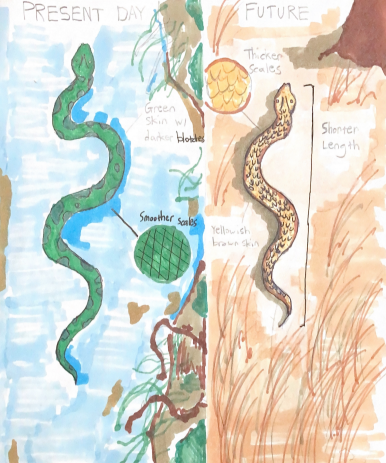Anacondas live in water-heavy, lowland areas like swamps and rivers, relying on dense vegetation for cover. They prefer hot, humid climates around 75°F, which support abundant plant and animal life. Anacondas use their habitats for protection, especially during mating, as they give live birth. These factors help them thrive as apex predators in their ecosystem. Global warming may transform the rainforest into a drier, savannah-like habitat with less rainfall and vegetation, thus drying out the anaconda's habitat. The snake could evolve to have more defined scales, a yellowish-brown color for better camouflage, and thicker scales to store water like a rattlesnake for better hydration and movement. It may become land-focused, using burrows for shade and shrinking in size for faster hunting. Additionally, its heat-sensing abilities would adjust, and its diet would shift primarily to land mammals and birds.
Contact us
Thank you for your interest in contacting Future Engineers. We look forward to connecting with you!
General Inquiries
support@futureengineers.orgSponsorship Inquiries
sponsor@futureengineers.org
